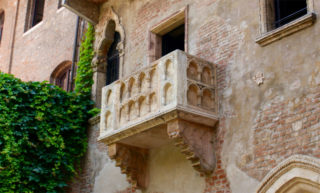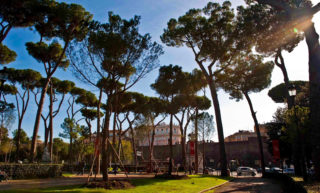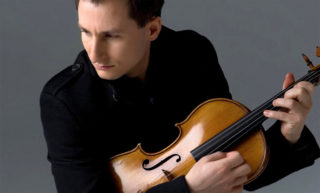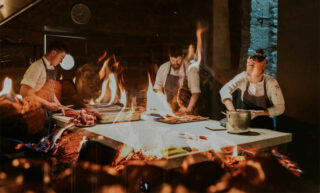Lenny
Sinfonieorchester Basel
31 October 2018
Kim Criswell, vocals
Daniel Schnyder, saxophone
Wayne Marshall, piano and conductor
Leonard Bernstein - Overture Candide
Daniel Schnyder - Ballad and Riffs for Bernstein
Leonard Bernstein - What A Movie!
George Gershwin - Rhapsody in Blue
Leonard Bernstein - Symphonic Dances from West Side Story
Leonard Bernstein was five years old in 1924, when Paul Whiteman’s Band premiered Rhapsody in Blue with the composer, George Gershwin, at the piano. The piece was part of a concert under the title An Experiment in Modern Music in which Whiteman wanted to prove that popular jazz could be a stepping-stone for the masses to understand and enjoy symphonic music and opera. Whiteman had invited bigwigs such as Stravinsky, Heifetz and Rachmaninoff, but was also dreading their contempt. However, the concert turned out to be a resounding success and one could argue that it helped pave the way for American classical music.
As far as we know, young Lenny didn’t attend the concert, but incorporating theater and jazz into his compositions, he is seen by many as Gershwin’s successor. As a conductor he has championed American composers; as a pianist, just like Gershwin himself and Wayne Marshall this month, he conducted the orchestra while playing the Rhapsody in Blue. With his TV-programs he won over millions for classical music.
Born in Massachusetts in 1918 from Ukrainian parents, Bernstein showed interest in music from a young age. He graduated from Harvard with a cum laude degree with a thesis about “The Absorption of Race Elements in American Music”, already showcasing his lifelong involvement in social matters and American music, which he envisioned as a mix of American and European, classical and popular, black and white.
In the same vein, connecting jazz with classical music, Swiss-American composer Daniel Schnyder wrote Ballad and Riffs for Bernstein for tenor saxophone (the quintessential jazz instrument) and orchestra, in which Schnyder, also the soloist, will be joined by Domenico Catalano, the orchestra’s bass trombonist, to play the riffs.
In the 1950’s Bernstein worked simultaneously on Candide, an operetta after Voltaire’s eponymous novella (conceived in Switzerland), and the West Side Story. For the song Somewhere, a lovesong from West Side Story about a white boy and a Puerto Rican girl against the backdrop of gang-ridden Manhattan, Bernstein uses the main theme from the Adagio of Beethoven’s fifth piano concerto. It exemplifies Bernstein’s often eclectic way of composing, but it was also a way of turning European into American music, and it demonstrated his engagement with social issues such as violence and discrimination.
The sixties were mostly dedicated to his directorship of the New York Philharmonic Orchestra, of which he was the first American-born conductor and with which he established a reputation for the interpretation of the symphonies by Mahler, the composer who was closest to his heart. His multitude of activities never allowed him to fully concentrate on his composition work causing critics to consider his work too wide-ranging. But as Alex Ross, the erudite American music writer, rightly says (and I paraphrase): the brilliance of some of his compositions, such as I will sing the Lord a new song, should ensure his immortality. Leonard Bernstein passed away on 14 October 1990 and is buried with a copy of the score of Mahler’s fifth symphony lying on his heart.
These English program notes have been published in the magazine (No. 2, 2018/2019) of the Sinfonieorchester Basel.








Comments